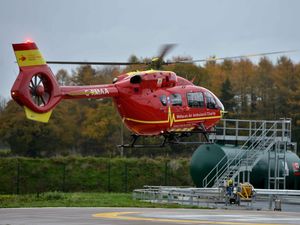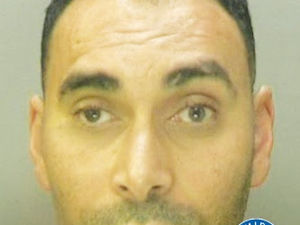Air ambulance chiefs issues drones warning as Christmas approaches
With Christmas around the corner the Midlands Air Ambulance Charity is warning people to take care with any drones they unwrap on the big day.

The lifesaving service, which has a base at Cosford, said people should be aware of the adverse effects drones can have if flown near air ambulances and other emergency services aircraft.
Ian Jones, clinical operations director for Midlands Air Ambulance Charity said: “We are keen for people to enjoy their drones, as they can be great fun, but we also want to raise awareness of some of the dangers to our organisation and others.
"A patient requiring the advanced clinical skills that we provide will most likely be experiencing the worst day of their lives, flying a drone that could disrupt our ability to rapidly reach or treat those in critical need can have an adverse effect on their situation.
“As a lifesaving charity, we understand that many will take an interest in our pre-hospital emergency service, but we please ask that those using drones consider our mission first before flying their drone close to an incident.”
By 2030, there are projected to be 76,000 drones in UK airspace, according to the UK Civil Aviation Authority (CAA).
As the commercial drone market grows in popularity with an expanding range of gadgets available, and more than 180,000 registered drone pilots in the UK, Midlands Air Ambulance Charity is reminding people of three simple rules.
The first is 'do not fly drones near other aircraft'.
A spokesman for the charity said: "While this seems simple enough, there have been several reported incidents in recent years where drones have been flown in the direct flightpath of a helicopter that has been on its way to an emergency – whether that be a police helicopter, search and rescue aircraft, or air ambulance helicopters.
"If a responding helicopter’s crew knows there is a drone above the scene, they will de-conflict and land at an alternative site to prevent a collision, which delays the clinical team getting to the patient. Drones can also cause distractions, putting the pilot’s and clinical team’s health and safety at higher risk as they are small and very hard to see."
The second rule is 'do not use drones to fly over air ambulance airbases'.
The spokesman added: "Midlands Air Ambulance Charity appreciates anyone taking an interest in its lifesaving work across the region, however flying a drone over one of its three operational airbases will only cause a hindrance to the advanced teams’ rapid response effort.
"The charity’s highly skilled clinicians and pilots need to be able to take flight straight away when emergency calls are received, if drones are flying around, or there is other aviation activity in the sky, this delays their take-off time, which could be the difference in life and death in some circumstances.
"Two of Midlands Air Ambulance Charity’s airbases are within the Flight Restriction Zone (FRZ) surrounding airfields and its unlawful to fly a drone within these zones without prior permission from the airfield."
The final rule is 'do not fly drones to film incidents'.
The spokesman said: "This is another point that seems obvious to some, but it’s now commonplace to see people filming emergency services personnel whilst they are responding to incidents. In some rarer cases, it has been known for some members of the public to even fly drones nearer to an incident to film more of what is happening.
"Midlands Air Ambulance Charity strongly advises that people are considerate of patients’ privacy and dignity if they come across an incident scene. Not only that, but drones can also cause distractions to medics performing lifesaving interventions, putting patients’ outcomes at adverse risk."




